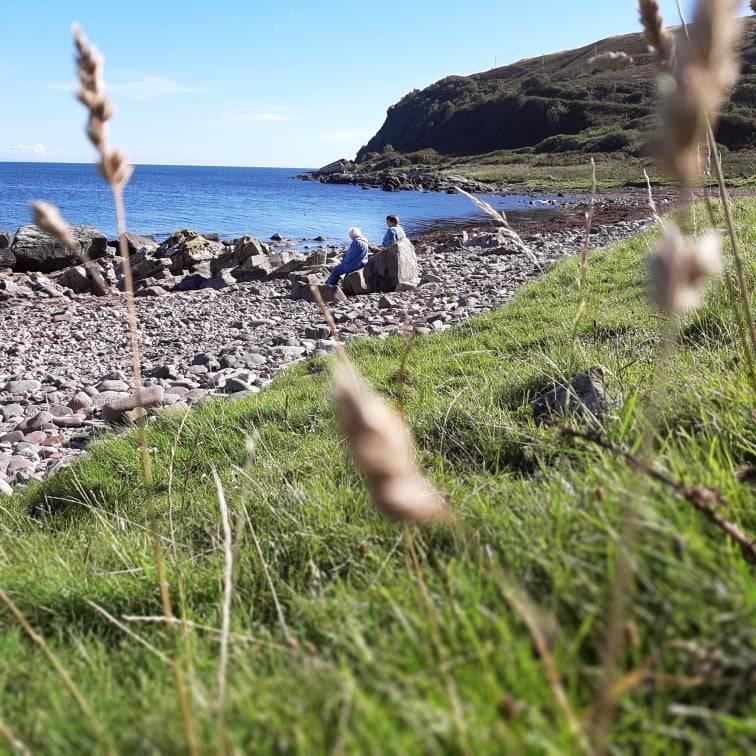The Coasters
Kim Lafferty
The Coasters
A number of Campbeltonians known as ‘coasters’ in the years of the 20th century fulfilled their recreational needs by visits to the shoreline of the Learside Road around New Orleans Glen and Corphin Bay – a locality better known generally as the Second Waters. Others tramped northwards to Kilchousland, and some to the challenging Gauldrons, Craigaig (pronounced Crajake) or Inneans (Eenanns), on the rugged south-western peninsula terrain between Machrihanish and the Mull of Kintyre.
There was a marked difference between the man who announced he was ‘gaan tae the shore’ and one who said he was ‘making for the coast’. The ‘shore’ man to this day plans his outing to coincide with the moon-controlled biggest ebb tides in order to partake in ‘wilk’ picking as a commercial enterprise, whereas the coaster would regard the minimal harvesting of shellfish as a pleasant way of adding to the food store.
There are probably no coasters left now, but at one time they were easily spotted on the roads leading from the town, especially at weekends, en route to their preferred spots.
To aver that the coasters ‘roughed it’ would be an understatement, but they were a breed set apart who found true happiness during their forays, either alone with their thoughts or in company, particularly in the surroundings of the Learside’s coarse grass and pebble-strewn beaches. Sustenance came in the form of dry or tinned stores, occasionally supplemented by rabbit stew or ‘wilk bree’ a thin soup made from periwinkles. Tea, naturally, was taken regularly, as were certain stronger brews.
Three well-known latter day coasters, Jamie Loafs Moran, Jock Smith and Teddy Lafferty sometimes met up at the Second Waters in a makeshift shelter created from a crashed ambulance. The Second Waters was also home to another ‘caravan’ – a converted Co-oP grocery van – the coasting haunt of four Morrans brothers, Joe, Dan, Mickey and Archie.
On the other side of the peninsula, two Campbeltown brothers, Stewart and Malcolm Hamilton, for many years maintained a hut at Craigaig, where they even created a three-hole golf course! Malcolm hiked frequently to distant Inneans and Largybaan from Craigaig, sometimes returning in darkness, such was his familiarity with the tricky route.
The Inneans name comes from two long-abandoned townships, Innean Mor and Innean Beg. On the seaward side of the glen is a white sandy beach. Here can be found the final resting place of an unknown sailor which has been marked by a succession of crosses (originally dated May 16, 1917) and inscribed ‘God Knows’.
Campbeltown author, historian, and wildlife enthusiast, Angus Martin, a visitor to the area on multiple occasions over the years, has always maintained an interest in the upkeep of the ‘sailor’s grave’.
As told by Freddy Gillies
More information on visiting the area can be found here.
